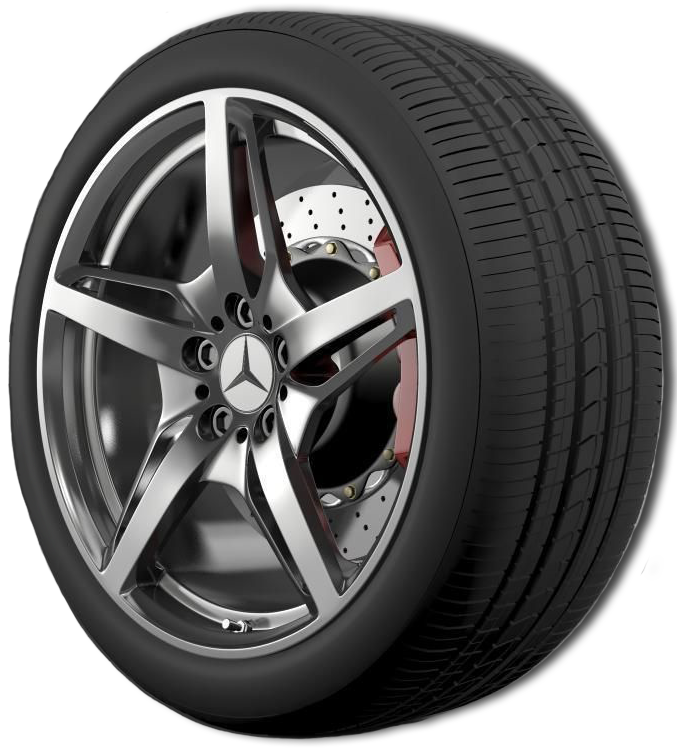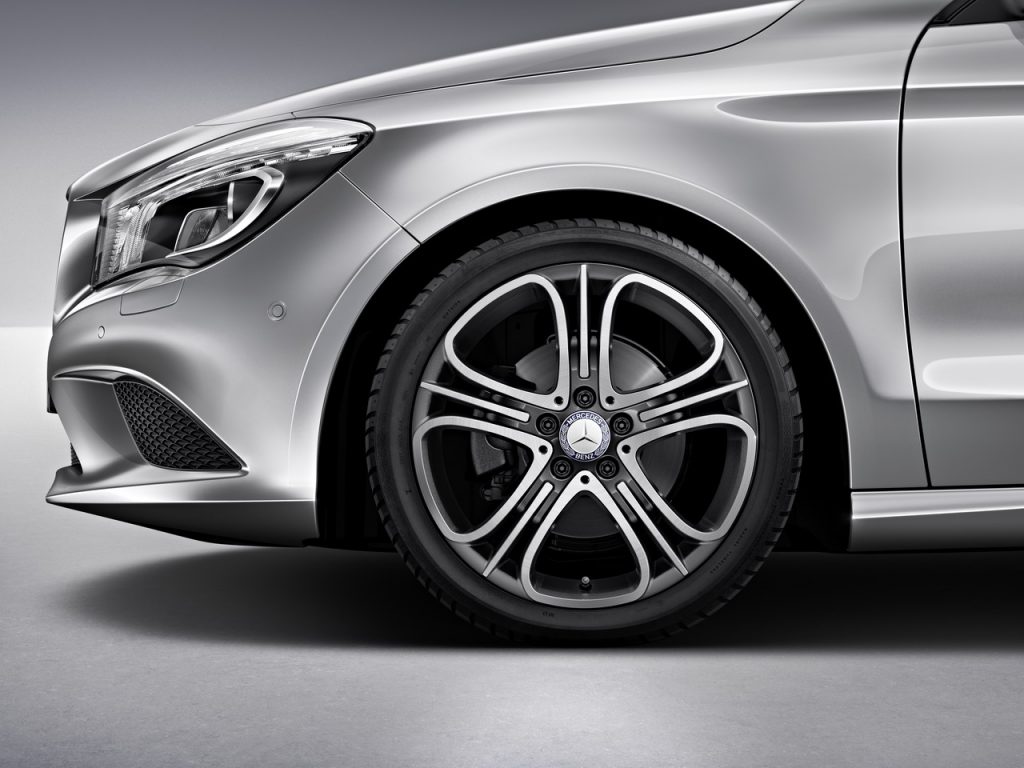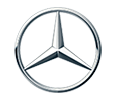
Wheels, Rims, Hubs and more
Whether you’re purchasing a new vehicle or looking to upgrade an existing one, shopping for new wheels is a great way to customize your Mercedes. After all, the wheels are some of the first things people will notice about your car’s exterior, so why not go for function AND style?
While we can all agree that wheels are necessary, it’s not always easy to figure out which wheels are the best choice for your particular make and model. Every Mercedes-Benz vehicle has a standard set of recommended wheels that go with it, and then there are seemingly infinite options to customize, upgrade, and optimize.
Keeping in mind that Mercedes-Benz has, well, a lot of vehicles to offer, how do you begin to choose the right wheels?
Wheels, Rims, or Hubs?
When you think of the “wheels” on your car, you probably think of the tire, the rims, the hub, and everything in between. But in car part parlance, the wheel does not actually include the tire. The three main wheel components are the rim, wheel disc, and hub.
Although the two terms are often used interchangeably, there is a difference between wheels and rims. Many use the term “rims” to refer to the entire metal tire mount (the rim and wheel disc are usually cast from the same piece of metal), but the rim is only the outermost part that connects to the wheel through the wheel’s spokes. The rim is what holds the tire in place, enabling it to rotate with the rest of the wheel.
The wheel disc is the central part of the wheel that connects the rim to the axle hub (and where you can get a little flashy). Interestingly, the spokes found on some wheel designs are remnants of the earliest cars, which had wooden or metal spokes to attach the rim to the hub. Once the wheel disc was introduced, spokes were no longer necessary as functional components, but cast alloy “spokes” continued as a popular design option.
The hub is the central wheel base through which the wheel is attached to the car’s suspension with studs (and another place for some flair).

Single-Piece Wheels or Multi-Piece Wheels?
Knowing the difference between rims, wheel discs, and hubs will help you select your wheel classification. There are actually two types of wheels: multi-piece wheels and single-piece wheels.
Single-piece wheels are pretty much what they sound like. They are manufactured as a single part, meaning that the rim, wheel disc, and hub are forged together and cannot be separated.
Multi-piece wheels are wheels manufactured as separate components; i.e.,the rim, wheel, and hub can all be put together or removed individually. They are usually more expensive than single-piece wheels, but have the distinct advantage of being easier to maintain: if one part of the wheel is damaged, it’s not necessary to replace the whole wheel. Having a multi-piece wheel also leaves more room for customization.
How Do I Choose The Right Wheels for My Vehicle?
So now you know that the wheel refers to three main components–the rim, the wheel disc, and the hub–you can start to shop more confidently. But the question remains: which wheels are right for YOUR car?
Most consumers will be considering style as well performance when looking at car wheels. Hopefully taking slight precedence over style, wheel performance will depend on your wheel size and the material the wheel is made of.
For example, larger diameter wheels are good at increasing tire grip, which means better handling and a more responsive vehicle. Additionally, a wider rim makes for more stable tires, especially on corners. However, a wider tire and rim radius can actually slow down your vehicle and hinder the anti-lock braking system.
What about material? In most cases you will be looking at three options: steel, alloy, and chrome.
Steel wheels are heavier and last longer, but will also make for a less smooth ride. They are the best choice for rougher-terrain driving; however, they are not as suited to humid climates, as they are prone to rust. Cost-wise, steel is usually the most affordable option.
Alloy wheels are lighter and less durable than steel. They are usually pricier, but being lighter means better gas mileage, higher speeds, and less pressure on your brakes. They are also more malleable, which means more custom options.
Chrome makes the biggest statement, and is usually chosen primarily for aesthetics. It’s somewhere in between steel and alloy in durability, but requires a lot of maintenance to keep it shiny.
Of course when it comes to style, there are a seemingly infinite number of options in size, color, shape, and material. Knowing more about what affects your vehicle’s performance can help narrow your choices down.

Mercedes-Benz of Littleton Can Help You Choose
So, 18” or 20”? Alloy or chrome? Twin spokes or single? Keeping these performance and style variables in mind, you will ultimately also need to choose wheels that are compatible with your tires and vehicle. One wheel size does not fit all, sometimes not even on the same car–front installed wheels may be different specs than rear wheels.
An experienced DIYer can certainly shop and build for themselves, but it’s important to remember that your vehicle’s warranty will likely be affected by selecting and installing your own wheels independent of the manufacturer.
Mercedes-Benz of Littleton will help you navigate choosing wheels for your car. They conveniently offer an extensive selection of wheels and tires available to shop online, with 24/7 online assistance. All you have to do is enter your car’s make, model, and year, and you can browse compatible parts for your Mercedes. Once you make your selections, the Mercedes-Benz of Littleton parts department will take over for you, and guide you from purchase to installation.
Feel free to contact our qualified technicians with questions, or make an appointment at our dealership install your perfectly compatible, performance-optimized, and incredibly stylish wheels.



